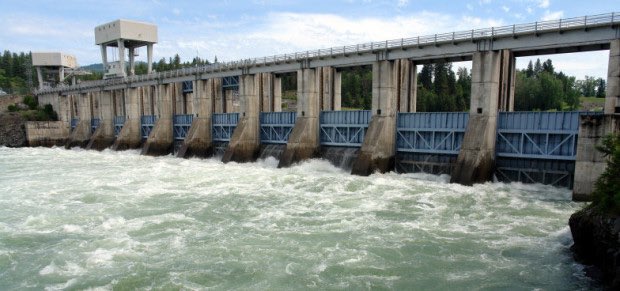forum
library
tutorial
contact

River Ops Meeting Set
by Justin FranzPriest River Times, October 19, 2016
|
the film forum library tutorial contact |

|
River Ops Meeting Setby Justin FranzPriest River Times, October 19, 2016 |
 PRIEST RIVER -- Federal management of the Columbia River System is coming to a theatre near you. In fact, on Oct. 26 from 4-7 p.m. at the Priest River Event Center, representatives from the U.S. Army Corps of Engineers, Bureau of Reclamation, and Bonneville Power Administration will hold a meeting to gather public input for their environmental impact statement on how they manage the Columbia River System, and on how they should conduct 14 federal projects in the interior Columbia Basin.
PRIEST RIVER -- Federal management of the Columbia River System is coming to a theatre near you. In fact, on Oct. 26 from 4-7 p.m. at the Priest River Event Center, representatives from the U.S. Army Corps of Engineers, Bureau of Reclamation, and Bonneville Power Administration will hold a meeting to gather public input for their environmental impact statement on how they manage the Columbia River System, and on how they should conduct 14 federal projects in the interior Columbia Basin.
According to a Sept. 30 press release, the three agencies will "present a reasonable range of alternatives for long-term system operations and evaluate the potential environmental and socioeconomic impacts on flood risk management, irrigation, power generation, navigation, fish and wildlife, cultural resources and recreation."
From now through Jan. 17, 2017 they will be on the road gathering public input across the Northwest, from citizens in Portland, Boise, Bonners Ferry, and sundry other places. Anybody can bring any concerns to the attention of the federal agencies at these meetings. By law, the agencies are required to take into account all such input from the citizenry as they prepare the EIS.
Those who cannot attend the event can learn about the project thanks to two online webinars scheduled for Dec. 13, linked at the project website, www.crso.info. If you cannot attend the Oct. 26 meeting but want to submit comments, email them to comment@crso.info, or mail them to: U.S. Army Corps of Engineers, Attn: CRSO EIS, P.O. Box 2870, Portland, Oregon 97208-2870. All comments, including the name and address of the person submitting them, become part of the official record and are considered public information.
For more information, call 800-290-5033 or visit www.crso.info.
Sockeye recovery plan completed in 2015Last year, NOAA Fisheries completed a recovery plan for sockeye salmon, which used to return in great numbers to Redfish Lake and other lakes north of Ketchum. NOAA's Interior Columbia Technical Recovery Team proposed biological viability criteria that must be met before Snake River sockeye salmon can be delisted from "endangered" status. NOAA reports that a minimum of 1,000 wild spawners must be achieved in both Redfish Lake and Alturas Lake. The minimum spawning abundance threshold for Pettit, Stanley or Yellowbelly lakes is 500 wild spawners. This year, a total of 574 sockeye salmon returned from the ocean to the Sawtooth Valley. Of those, 329 continued into Redfish Lake to spawn, while Idaho Fish and Game brought the other 245 into their hatchery program to spawn in captivity and produce more captive-raised fish. In addition to those fish returning from the ocean, Idaho Fish and Game released 786 captive-reared fish into Redfish Lake to spawn, and another 100 fish into Pettit Lake to spawn there. "The benchmark of 1,000 returning fish cited in the recovery plan refers to fish returning from the ocean, so the captive-reared fish do not count toward that total," said NOAA Fisheries spokesman Michael Millstein.
Idaho Mountain Express, by Tony Evans November 2, 2016
learn more on topics covered in the film
see the video
read the script
learn the songs
discussion forum
